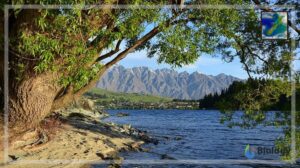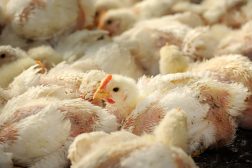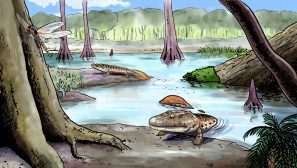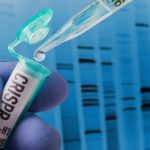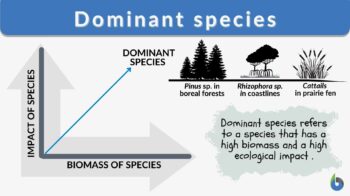
Dominant species
n., [ˈdɑmənənt ˈspi ʃiz]
Definition: a species in the ecosystem with the greatest biomass and high ecological impact
Table of Contents
Dominance is the state of being supreme or dominant. Community dominance refers to the form of dominance where certain species are abundant as most species are rare. Conversely, ecological dominance is the degree to which one or more species have a significant influence over the other species in their ecological community (due to their large size, population, productivity, or other factors) or make up a greater proportion of the biomass. The dominant species is a species identifiable from the perspective of ecological dominance.
Dominant Species Definition
What is a dominant species?
In ecology, a dominant species refers to the group of organisms (or species) that have the most significant influence or control over the other organisms in its ecological community. A similar definition of it is in biology. A dominant species is a species that prevails in an ecosystem, especially when they are the most numerous and have a high ecological impact. This means they constitute the majority of the biomass. And because of high numerical advantage, dominant species tend to have an impact on environmental situations, community diversification, and/or ecosystem features. (Avolio et al., 2019) In forests, for instance, which species is most dominant? Woody tree species can be considered the dominant species in a forest, based on their relatively large population size, biomass, and high ecological impact.
Now, ponder this: are apex predators dominant species based on them being on top of the food chain? What if their population is relatively smaller than the others? Does that mean they cannot be regarded as dominant? From the perspective of ecological dominance, the dominant species is defined and identified based on the ratio of individuals belonging to the most abundant species relative to the overall number of members in the ecosystem. Thus, in this regard, apex predators may not be the dominant species.
Based on Grime’s mass ratio hypothesis, a dominant species is high in biomass and with a high environmental impact. (Grime, 1998). Thus, for some species that could be abundant, widespread, or common but may have little impact on the community or the ecosystem, for example, because of their relatively small physical size, these species may not be regarded as dominant. Grime referred to this species as subordinates. See Figure 1.
Avolio et al. (2019) proposed a two-step approach; the first is to identify them based on their abundance and frequency of occurrence and the second is to evaluate their impact on ecological processes (e.g, via targeted removal studies). Scaling the impact from the molecular to the ecosystem, to the biome level is crucial.
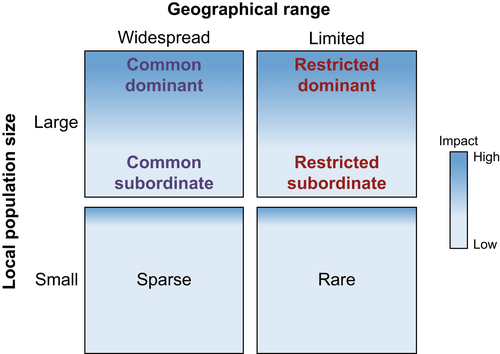
What makes a species dominant?
Avolio et al. (2019) provided a summary of the characteristics or traits that make a species potentially dominant. Several factors are at play (e.g, ecological, biological, genetics, spatial, evolutionary, etc.). Here is a summary of the types of dominance to explain the mechanism of ecological dominance.
- Dominance by resource acquisition, three possible ways to explain this type of dominance: (1) based on the resource-ratio hypothesis, the species with the lowest equilibrium resource requirement tended to be dominant, (2) based on the competitive effect hypothesis, species with the highest resource uptake capability tended to be dominant, and (3) based on stoichiometric homeostasis, dominant species are those with the highest stoichiometric homeostasis (i.e, the ability to maintain its elemental composition in spite of a change in the elemental composition of its environment).
- Dominance by niche matching, two possible mechanisms: (1) niche specialization, where dominant species tended to have specialized features or capability to utilize the most abundant resource from its environment and (2) niche modification, where dominant species has characteristics that enable it to modify its environment and then create or form its new niche.
- Dominance by stochastic processes: this is enabled by a mechanism that entails the interaction between ecological and evolutionary priority effects. Stochastic processes are those having a random probability distribution or pattern. Species tended to prevail over the other species as being the first ones to arrive (successions) and thereby have the advantage of diversifying and adapting earlier than the other species.
A dominant species is a species that predominates in an ecological community, particularly when they are most numerous or form the bulk of the biomass. To define “predominates”, it means that the species prevails or is superior over the other species in terms of numerical advantage or control. For example, in wet woodland in western Europe, the dominant tree is alder (Alnus glutinosa). Some seafloor communities are dominated by brittle stars. Tidal swamps in the tropics are usually dominated by species of mangrove (Rhizophoraceae).
What’s the ecological role of dominant species?
Dominant species had an important role in the coexistence, distribution, and structuring of species. In ecology, species that are considered dominant have great population sizes as well as in productivity as compared to their competitors. In the ecological environment, the dominance of species depends on many factors like moisture, groundwater condition, and temperature.
Ecological dominance impacts competition. Due to the availability of limited necessary resources for survival, competition is created among two closely related species and thus the local coexistence becomes difficult. Due to lack of resources, the predation-prey relationship and a negative relation for survival are formed among the species.
In the structure of the community, dominant species had an integral role. It affects the distribution and survival of other species. Local species richness is often greater in biological communities with a high degree of dominance than in groups with a low level of dominance.
Dominant Species Examples
Are humans a dominant species? Based on studies, of the earth’s total biomass, almost 80% is from plants. The findings of this study were published in Proceedings of the National Academy of Sciences USA.
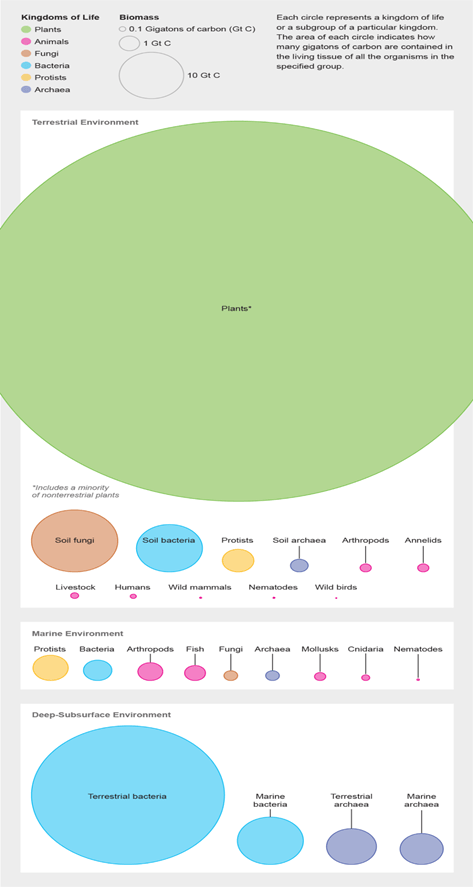
Humans occupy a small proportion of the total biomass. See the small pink dot as compared with the huge green dot denoting the plant biomass. The human species, having comparatively lower biomass than many others, is, therefore, an indication that humans are not the dominant species. Humans, instead, could be a keystone species, which is defined as a species that has a significant ecological impact with respect to its biomass. According to Worm and Paine (2016), humans as a hyperkeystone species affect biological communities despite their relatively lower biomass or smaller population size. Watch the video below to understand the difference between dominant and keystone species.
What, then, are the dominant species? Let’s take a look below for some of the examples of dominant species for various types of habitats.
Examples of dominant species:
- Dominant species in forests: In any type of forest, the dominant plant groups are trees. Due to their height, they not only affect the vegetation of others but also cause the survival of many animals which depend on them. In the Northern forest, conifers including larch, spruce, and fir are specific examples of dominant species. Douglas fir is dominant in Alaska, Washington, and Canada.
- Dominant species in hot deserts: As in the deserts, there is a lot of heat and a lack of water, so dominant animals and plants show some adaptation to preserve water and make their survival possible in the harsh and hot climate. Barrel cacti and prickly pear are common vegetation in the desert of North America. In the desert ecosystem, certain species of mammals, reptiles, and birds also show adaptation on their structure to keep themself the dominant wildlife in the desert ecosystem.
- Dominant species in wetlands: Wetlands are waterlogged conditions that are dominated either by herbaceous plants or by woody plants. In marshy areas, grasses, reeds, and cattails are dominant. In the wetlands of North America, the non-native purple loosestrife is a dominant species over other small plants. Ocean dominant plants are red algae, kelp, and seagrass. (Carter, 2021) In the wet woodland of Europe, alder (Alnus glutinosa) is the dominant tree.
- In the tropics, tidal swamps are dominated by mangroves.
- Sphagnum moss is the dominant vegetation in temperate bogs.
- Some seafloor communities are dominated by brittle stars.
- Sessile organisms (like limpets, barnacles) are dominant over rocky shorelines.
- In winter, many animals and birds migrate from colder to hotter regions. This migration also helps them to remain dominant over other species.
Try to answer the quiz below to check what you have learned so far about dominant species.
References
- Akatov, V., & Perevozov, A. (2011). Relationship between dominance and richness of local species: an analysis of the underlying reasons with arboreal and avian communities of the West Caucasus as an example. Zhurnal obshchei biologii, 72(2), 111-126.
- Avolio, M. L., Forrestel, E. J., Chang, C. C., La Pierre, K. J., Burghardt, K. T., & Smith, M. D. (2019). Demystifying dominant species. New Phytologist, 223(3), 1106-1126.
- Bar-On, Y. M., Phillips, R., & Milo, R. (2018). The biomass distribution on Earth. Proceedings of the National Academy of Sciences, 115(25), 6506-6511.
- Carter, K. N. (2021). Dominant Species in a Diverse Ecosystem. Retrieved 26 Dec, 2021, from https://education.seattlepi.com/dominant-species-diverse-ecosystem-3936.html
- . 1998. Benefits of plant diversity to ecosystems: inmediate, filter and founder effects. Journal of Ecology 86: 902–910.
- Montañez, A. (2018). Scientificamerican.com. Retrieved from https://www.scientificamerican.com/article/plants-are-the-worlds-dominant-life-form/
- Worm, B., & Paine, R. T. (2016). Humans as a Hyperkeystone Species. Trends in Ecology & Evolution, 31(8), 600–607. https://doi.org/10.1016/j.tree.2016.05.008
©BiologyOnline.com. Content provided and moderated by Biology Online Editors.

